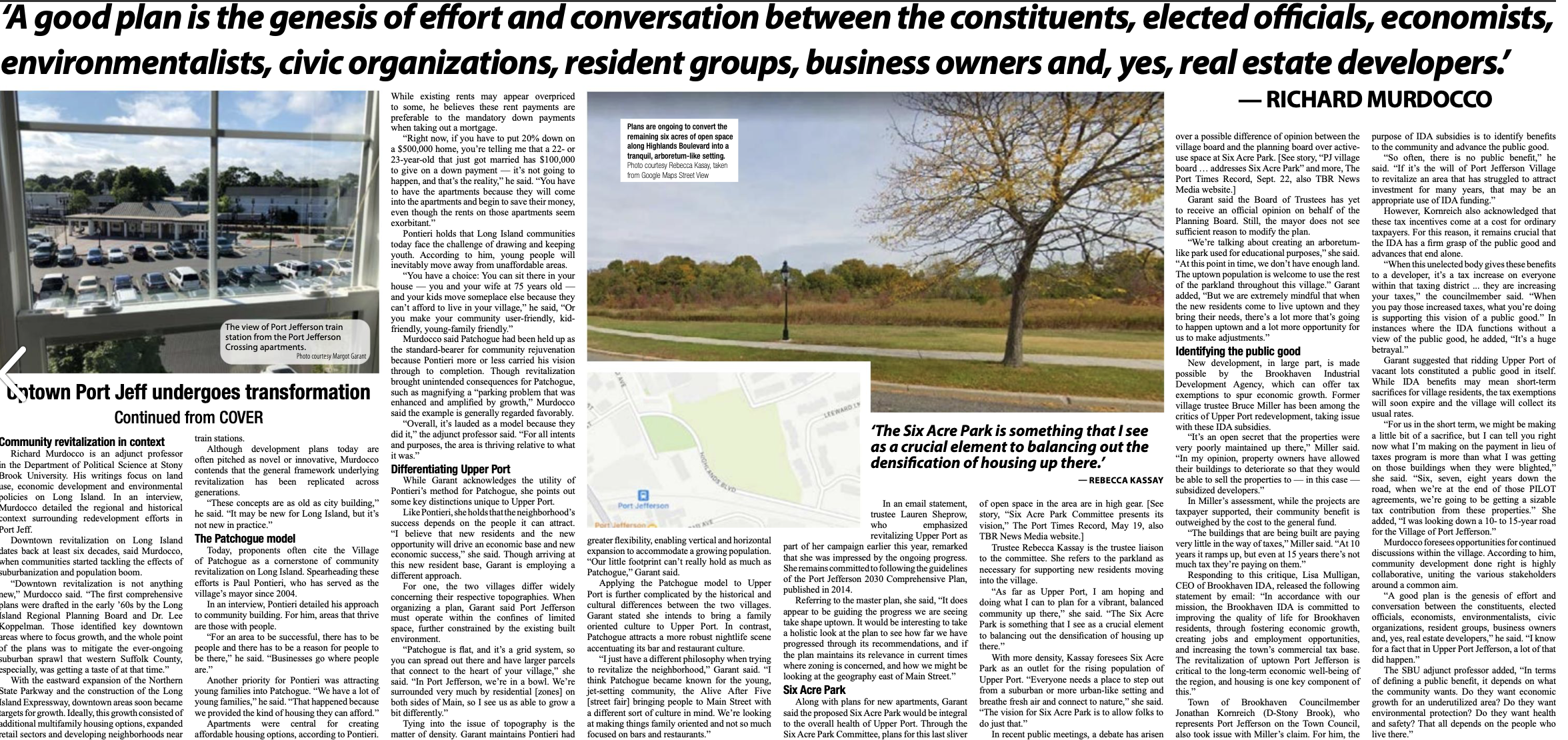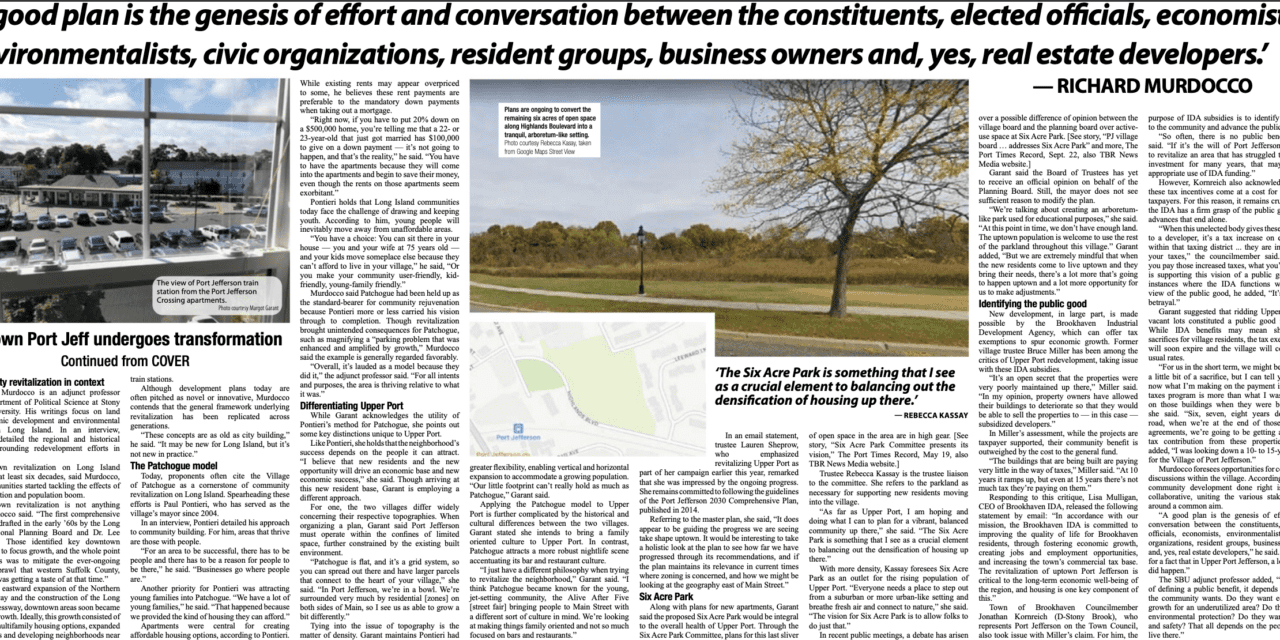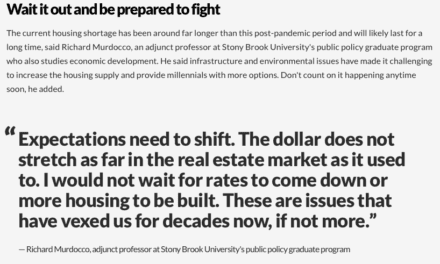The following excerpts are from an article by Raymond Janis that was published as the cover story of the Sunday, October 27th, 2022 editions of TBR News Media group’s newspapers. You can read the entire piece here.
“Richard Murdocco is an adjunct professor in the Department of Political Science at Stony Brook University. His writings focus on land use, economic development and environmental policies on Long Island. In an interview, Murdocco detailed the regional and historical context surrounding redevelopment efforts in Port Jeff.
Downtown revitalization on Long Island dates back at least six decades, said Murdocco, when communities started tackling the effects of suburbanization and population boom.
“Downtown revitalization is not anything new,” Murdocco said. “The first comprehensive plans were drafted in the early ’60s by the Long Island Regional Planning Board and Dr. Lee Koppelman. Those identified key downtown areas where to focus growth, and the whole point of the plans was to mitigate the ever-ongoing suburban sprawl that western Suffolk County, especially, was getting a taste of at that time.”

With the eastward expansion of the Northern State Parkway and the construction of the Long Island Expressway, downtown areas soon became targets for growth. Ideally, this growth consisted of additional multifamily housing options, expanded retail sectors and developing neighborhoods near train stations.
Although development plans today are often pitched as novel or innovative, Murdocco contends that the general framework underlying revitalization has been replicated across generations.
“These concepts are as old as city building,” he said. “It may be new for Long Island, but it’s not new in practice.”
…Murdocco said Patchogue had been held up as the standard-bearer for community rejuvenation because Pontieri more or less carried his vision through to completion. Though revitalization brought unintended consequences for Patchogue, such as magnifying a “parking problem that was enhanced and amplified by growth,” Murdocco said the example is generally regarded favorably.
“Overall, it’s lauded as a model because they did it,” the adjunct professor said. “For all intents and purposes, the area is thriving relative to what it was.”
…Murdocco foresees opportunities for continued discussions within the village. According to him, community development done right is highly collaborative, uniting the various stakeholders around a common aim.
“A good plan is the genesis of effort and conversation between the constituents, elected officials, economists, environmentalists, civic organizations, resident groups, business owners and, yes, real estate developers,” he said. “I know for a fact that in Upper Port Jefferson, a lot of that did happen.”
The SBU adjunct professor added, “In terms of defining a public benefit, it depends on what the community wants. Do they want economic growth for an underutilized area? Do they want environmental protection? Do they want health and safety? That all depends on the people who live there.”
You can read the rest of the piece from Janis here.













